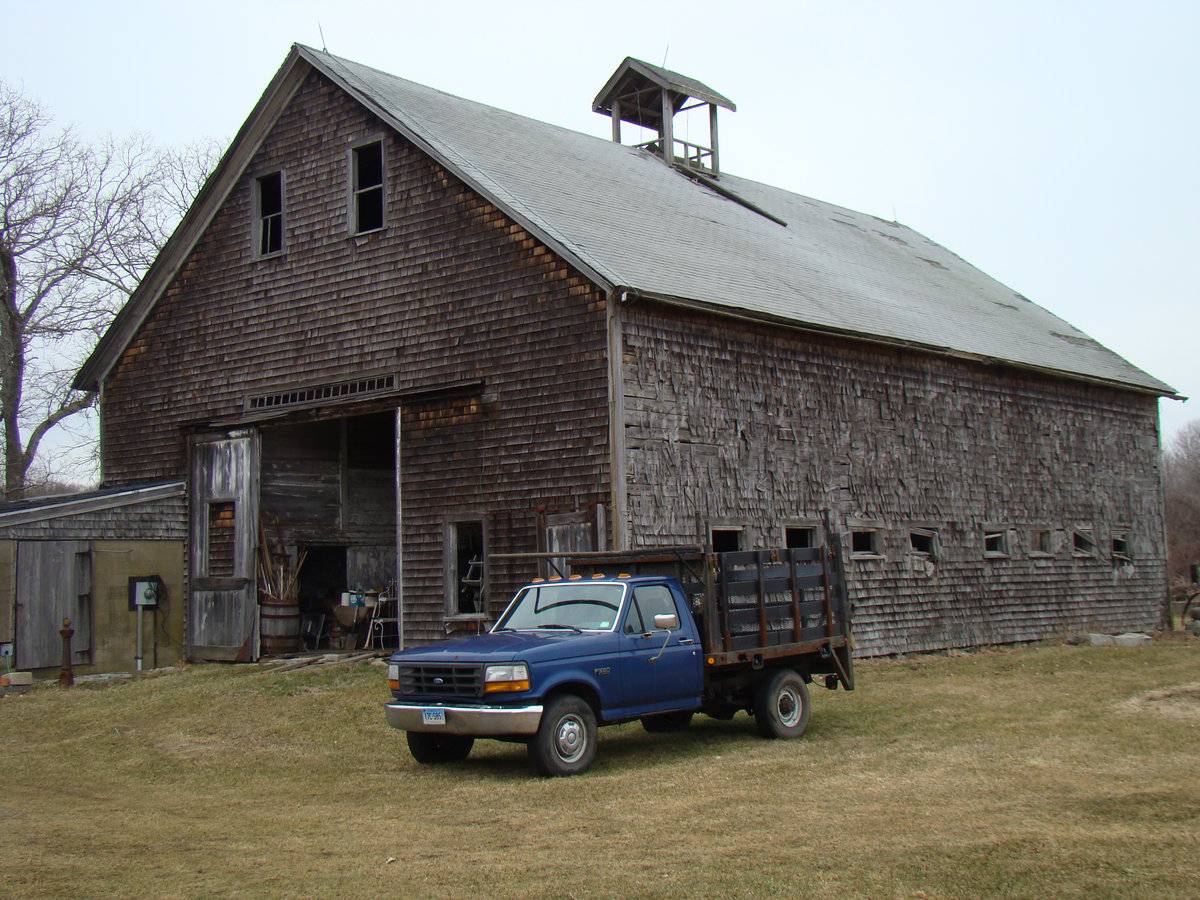 By the end of the day, storm clouds gather. Water from the recent storm brings Anguilla Brook high on its banks rushing past three silos and a large barn built in 1904. The York Farm was a working dairy until recent memory. The property, like the Davis Farm, is a remnant of a very early Stonington land grant. Locals stopped to buy milk on Wednesday and Sundays. But when Interstate 95 was built in the 1950s, the highway divided the original acreage and put a large section of it to public use. Sibby Lynch and Michael Schefers now farm 2.78 acres of the original York Farm situated beside the stream. The call their place Anguilla Brook Farm and Gardens.
By the end of the day, storm clouds gather. Water from the recent storm brings Anguilla Brook high on its banks rushing past three silos and a large barn built in 1904. The York Farm was a working dairy until recent memory. The property, like the Davis Farm, is a remnant of a very early Stonington land grant. Locals stopped to buy milk on Wednesday and Sundays. But when Interstate 95 was built in the 1950s, the highway divided the original acreage and put a large section of it to public use. Sibby Lynch and Michael Schefers now farm 2.78 acres of the original York Farm situated beside the stream. The call their place Anguilla Brook Farm and Gardens.  Sibby Lynch purchased the property in 1978. Here she and Michael grow local versions of Italian and French vegetables such as fennel and cardoon, rarely found in American markets.
Sibby Lynch purchased the property in 1978. Here she and Michael grow local versions of Italian and French vegetables such as fennel and cardoon, rarely found in American markets.
“I worked in New York City, but I visited here on weekends and planted flowers and potatoes. I remember taking the train back to New York on Sunday nights with a pocketful of tiny potatoes and feeling so lucky to have a connection to this beautiful field,” Sibby tells me.
By the time the Farmers Market started in Stonington in 1998, Sibby had moved back to town.
“I signed up for the market but didn’t have anything planted!” she remembers. The morning of the first market, I decided I would try selling watercress from the brook.”
Watercress is not a New England native plant. Early colonial settlers brought the English speciality with them. With few local predators, watercress quickly overran small brooks and streams in the northeast. The Connecticut Department of Agriculture considers the plant an invasive species. State rules ban the introduction of watercress into new watercourses but existing cress can be harvested where it grown for personal use or public sale.
The original garden follows a strict geometry. Wide gravel pathways separate square and oblong beds where a mix of herbs, flowers, vegetables and espaliered fruit trees grow. A long picnic table and benches welcome visitors to pause and observe. Birds nest at eye level in the dwarf trees. Unfortunately, a rabbit has breached the fence that surrounds the garden and has established two large burrows.
Michael created a second garden that mirrors the lines of the first. Here the couple grows European heirloom vegetables carefully researching seeds available from specialized catalogues. Part of the new garden is devoted to local Indian flint corn which the couple grind for polenta.
No comments:
Post a Comment